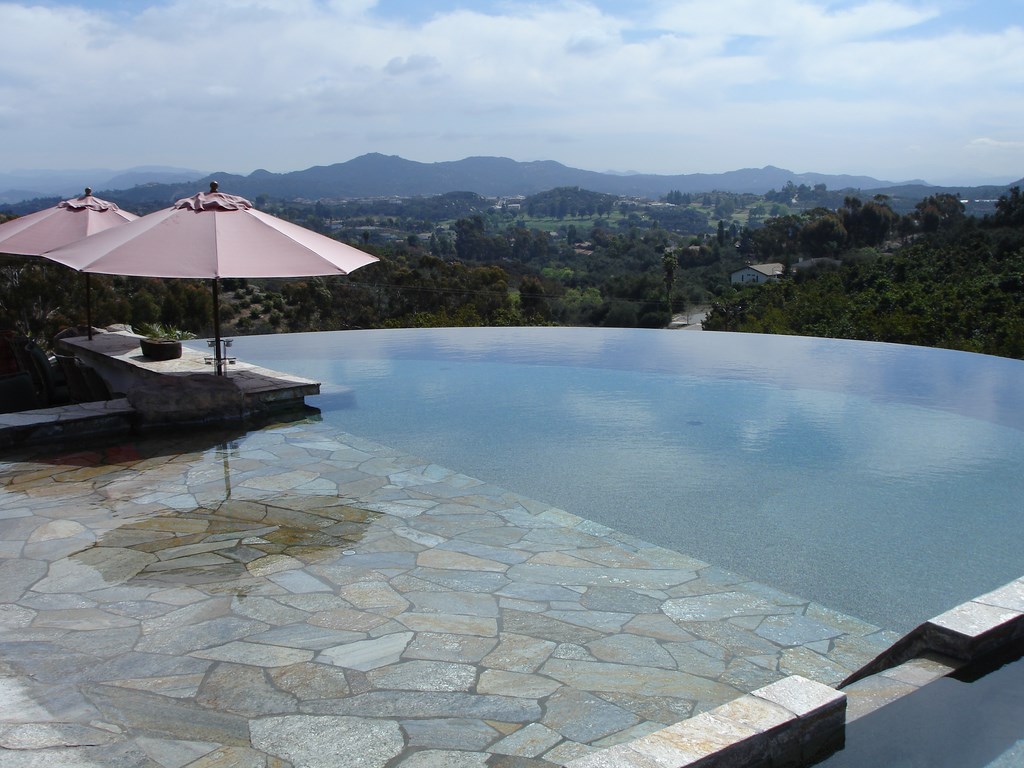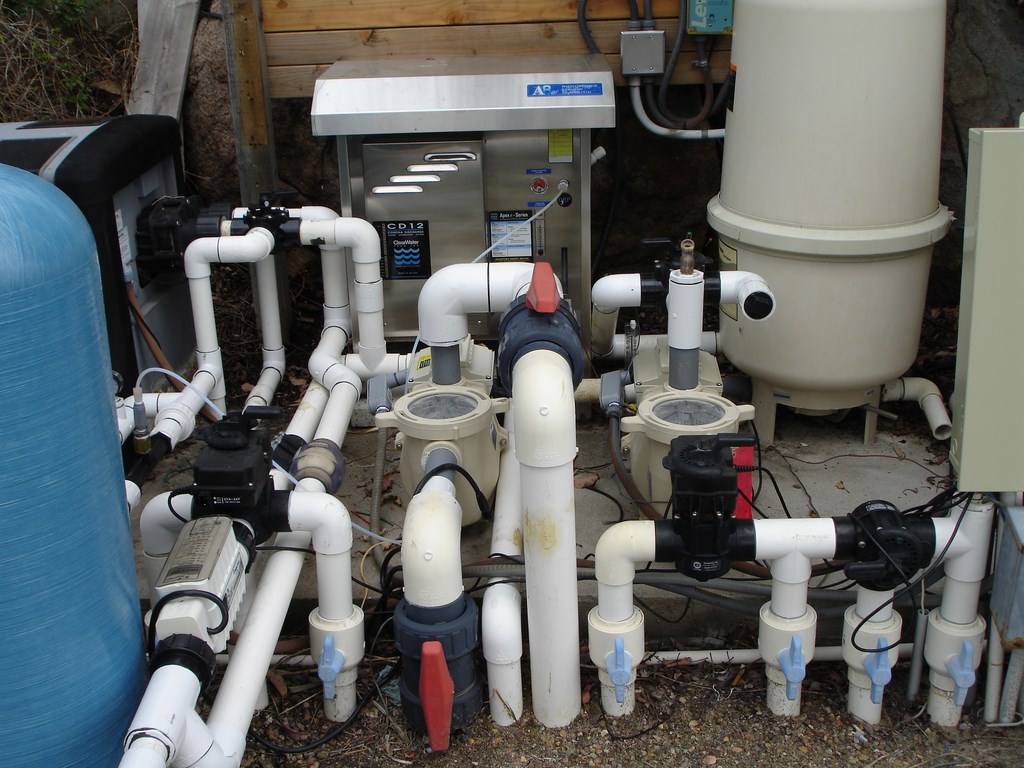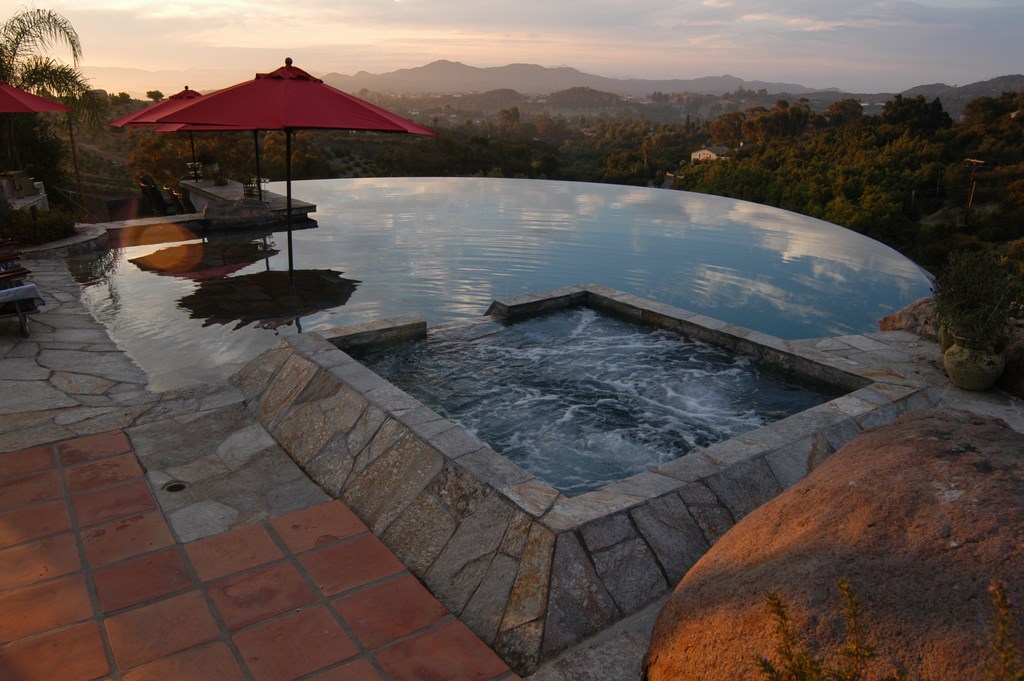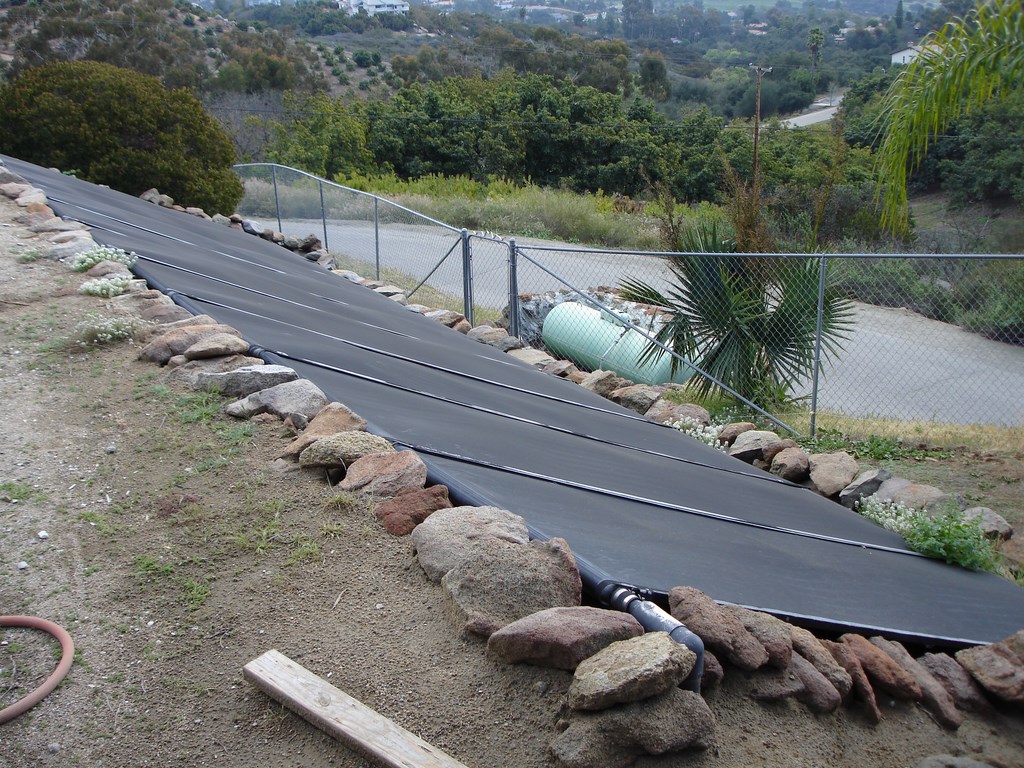Quiet Efficiency

| Recent times have seen the introduction to the pool/spa industry of a new breed of hydraulic pumps that use what is known as ‘variable frequency drive’ technology. Here, watershaper, hydraulics expert and Genesis 3 co-founder Skip Phillips describes why he believes these devices, which have been used successfully for years in other industries that demand hydraulic efficiency, represent the future for pools, spas and other watershapes. |
For all the progress made in recent years to change the nature of the game, to this day I still see situations in which pumps, filters and other system components for pools, spas and other watershapes have, hydraulically speaking, been completely misapplied.
This has resulted in the ongoing proliferation of costly noisemakers that drive neighbors crazy and send our clients into states of depression when their electric and gas bills hit their mailboxes. And all of it stems directly from the industry’s near-complete blindness – unnecessary, irresponsible and in many cases when litigated, indefensible – when it comes to the importance of proper hydraulic design.
It’s become my personal crusade to try to change this situation for the better. And the damage being done by general current practices cannot be overstated: Instead of providing visual beauty, enjoyment and recreation, the poorly conceived systems that are being installed right now will inevitably become significant sources of aggravation for their owners. Ultimately, that’s not good for the industry on any level, and I for one have long believed that it’s been up to us to develop our own solutions to these problems.
Fortunately, I think we’re now seeing the potential for a quantum leap on that front, courtesy of the introduction of what are known as variable frequency drives, that is, pumps built with a technology that radically slashes both noise output and energy consumption. It is a long-overdue advancement whose time has come.
DRIVEN BY VARIABLES
Despite years of being told otherwise by those who push the “bigger is better” mentality, we now know without question that upsized plumbing and filters combined with downsized pumps are a big part of the solution when it comes to both noise and running costs. Indeed, this is an approach that’s been endorsed over and over again in the pages of WaterShapes since its inception.
The advent of variable frequency drive (VFD) technology takes the discussion to an entirely new level: These are pumps that have the ability to adjust the speed of their impellers up or down to meet the varying flow demands that occur within given systems – a simple idea with profound implications.
| My first exposure to variable frequency drive pumps came in this remodeling project, where introducing the new technology to this pool and its long vanishing-edge/perimeter-overflow system produced astonishing reductions in energy consumption and made me more than a little receptive to working with VFD pumps in other projects. |
For their part, conventional centrifugal pumps can only provide a set amount of flow relative to conditions in the system as a result of the fact that their impellers spin at only one speed. This means that, depending on the variable loads occurring within a system, the pump will operate at varying levels of energy efficiency and noise output.
VFD technology changes all that. In fact, it alters the way we think about pumps altogether, relegating the term horsepower, for instance, to virtual meaninglessness because these pumps operate across a range of what might be considered “horsepower equivalencies.” Thus, a VFD pump isn’t a three-horse pump; it is instead a zero-to-three-horse pump. And pump curves lose their relevance because of the VFD pumps’ ability to conform to specific system demands. Instead of horsepower and pump curves, in other words, VFD technology is about amperage draw and the pump’s job description.
VFD pumps have long been used by water utilities, waterparks and various processing businesses for which variable flow demands have always been the defining issue for engineers. Although pools, spas, fountains and other watershapes would seem to have been a natural outlet for such a technology from the start, only now is it becoming available – and I for one am very glad it is.
Consider that in a typical installation these days, we generally find three pumps (at least) to manage three systems – one for primary heating and filtration, another for a water effect (a vanishing edge or waterfall or pressure-side cleaning system, for instance), and a third for the spa jets. Within the primary circulation system alone there will always be variable flow requirements. When a solar heater is on, for example, the flow requirement goes up, and the same is true when an ozone or other chemical-treatment system is initialized.
A conventional primary circulation system might have four different scenarios and flow requirements based on which components are running at any given time. With VFD technology, the pump adjusts its flow output to correspond to shifts in demand that occur when devices such as chemical or heating systems come on line.
TO THE TEST
The virtue of VFD technology is that these pumps work only as hard as they need to at any given time, so they offer the advantage of providing optimum flow levels for every scenario a system’s operation might present. This translates directly into what I’ve found to be massive energy savings and a reduction of noise that I can only characterize as astounding.
In the summer of 2005, I was approached by an equipment supplier (Pentair Water Pool & Spa, Sanford, N.C.) with a request to use to use my own backyard pool and spa as part of beta testing of their new VFD-based pumps. I was immediately intrigued by the concept and agreed to revamp my system completely using three of the new pumps to govern, respectively, the primary circulation, the spa jets and the vanishing edge.
|
The Chemical Connection Part of my exploration of the effects of variable frequency drive (VFD) pumps has been about how the new technology plays into the question of chemical treatment. The effect is twofold, so far as I can tell – and is in both respects significant. First of all, because of the pump’s ability to change speeds when demand changes, we were able to reinstall my ozone system (in this case a corona-discharge unit from Clearwater Tech, San Luis Obispo, Calif.) without using a separate booster pump. I relied here on expert help from Clearwater’s Marc Debrum and Charlie Furtney, and they let me know that their company was unaware of any other of their systems running on this technology. They were convinced going in that a separate, dedicated booster pump would likely be needed to generate adequate vacuum through a Mazzei injector. We collectively gambled that we could operate the system using one of the new pump’s presets – and it worked. This fact alone means that ozone systems will be less expensive to install simply by leaving out the extra pump. In my own backyard, the VFD pump now runs the ozone system at just about half the amperage draw that the separate booster pump would have required. Because the whole system now runs at a fraction of the former cost, I also run it for much longer periods of time – at this writing for about 14 hours a day at less than half the former cost of running it for just eight hours with centrifugal pumps. For an ozone system that must be running to be effective, the net effect of increased running time is greater sanitizing and oxidizing capacity. This means in turn that there’s less pressure on the supplemental sanitizing system I’ve used with the ozone unit. (Ozone dissipates quickly, so it is almost always used with a secondary chlorine or bromine system.) Then there’s the overall noise reduction: On my own pool, the ozone system is now the loudest component, with its soft whirr completely masking any sound of the VFD pumps. (I’ve found that the levels of ambient noise are now so low that even a gentle breeze will do the same.) To this point, I’ve yet to use my chlorine-generating system because the ozone has been able to keep up with the sanitizing demand. I am aware, of course, that this is not the recommended way to use ozone and that, in the 10 hours a day the pumps aren’t running, the water is essentially without a sanitizing agent. What’s worked for me through the cool winter months probably won’t hold up through warmer weather, but so far I’ve had great water quality since upping the running time of the ozone system. — S.P. |
My system also includes an ozone sanitizer, a chlorine generator and a solar-heating system, the latter in addition to a gas heater. Given the relative complexity of the system, it seemed to everyone involved that this would be an excellent case study for how the pumps responded to different operating scenarios and differing flow requirements – exactly the factors VFD technology is meant to accommodate.
Much of my excitement was prompted by the fact that I’d already been exposed to VFD technology through a company called Ikeric Pumps (Bakersfield, Calif.) – the first firm I know of to offer VFD pumps to the pool and spa industry. I’d used one on a remodeling project and found that the technology was almost too good to be true: The remodeled pool now has a three-horsepower-equivalent pump that runs a long vanishing-edge/slot-overflow system along with a one-and-a-half-horsepower-equivalent pump running the primary system.
In a typical application such as that one (or mine), the edge pump would run at about 14-plus amps. The pump on that remodeled pool did the exact same visual work with a draw of just above one amp. It’s interesting to note that the smaller pump that ran the primary system operated at just above two amps – a near-seismic change in power consumption, and the smaller pump uses more power than the bigger one. In this case, the disparity resulted from the fact that we were able to upsize the plumbing lines for the edge system to three inches but were restricted to using mostly two-inch lines on the primary system.)
It was easy to see even from this single experience that the old rules simply did not apply with this new technology.
With that remodel as a backdrop, I was more than eager to jump into the work in my own backyard. Through a period of months, I collaborated closely with Pentair’s Rob Stiles, Steve Zorn and Tom Schoendienst, reconfiguring my circulation system and establishing set points for pump operation.
The existing system had been built around conventional centrifugal pumps. With everything running, they drew between five and 14.5 amps each, which by pool-industry standards is extremely efficient relative to the system’s flow rates. In various combinations, the primary circulation system also operated a 14-panel solar-heating system as well as the ozone system, and I had been able to achieve a six-hour turnover at an amperage draw of 2.5. (Poorly designed systems run with much higher amperage draws.)
With everything running on the new VFD pumps, the system operates at less than 25 percent of its previous amperage draw. To say I’m pleased is truly an understatement.
DOWN WITH NOISE
It bears mentioning at this point that these pumps are significantly more expensive than standard centrifugal pumps. Given their level of efficiency, however, the increased cost is amortized quickly and the pumps will indeed pay for themselves many times over during their service lives.
I can say that since I’ve been running the new system, my power bills have been slashed to a fraction of their former inflated glory – and then there’s the noise factor.
| The use of VFD pumps simplified my equipment pad by reducing the number of pumps from three to two – a small saving in space but a substantial one with my utility bills. In profile, the VFD models aren’t much different in appearance from conventional pumps, but they more than distinguish themselves when it comes to performance. |
In fact, even though energy consumption is a huge societal issue at this point – one that hits everyone and will only grow in importance in the future – it’s actually been concern about noise that has been driving jurisdictions to impose onerous restrictions on pump use rather than the cost of operation.
With typical lack of aplomb, the pool and spa industry has expended its resources to fight the restrictions rather than jump out front and develop technical solutions. And the problems are only compounded by the ongoing dissemination of incorrect information about hydraulics, not to mention the granting of “design awards” to projects that are basically technical abominations.
Whether forced by regulators or not, the creative expansion of watershaping as a design/construction medium places a burden on our industry to improve. With pool and spa systems becoming more and more complex, the number of pumps being applied has increased dramatically. Naturally, that means the noise these systems commonly produce has increased, the result being that cities such as Del Mar, Calif., is requiring every equipment pad for every pool built to be contained within a vault of some kind.
| Nothing about the appearance of my pool has changed much since I wrote about it in WaterShapes’ June/July 2000 issue, but the transformation at the equipment pad has given me control over flows in ways that make efficient running of long vanishing edges, for example, much more attainable so long as proper hydraulic principles are applied. |
It’s easy to blame that situation on overzealous regulators, but given the fact that the pool and spa industry has set no decibel standard for its products, the people making the rules are left to their own devices and are imposing onerous requirements to abate perceived problems with noisy pool equipment.
If we’d been ahead of this issue in the way I think we should have been, a far greater number of our mechanical systems would have been built properly and in ways that would not have created noise-pollution problems. As it is, we haven’t been doing our job, homeowners have become annoyed and a small number of people have made political hay out of the issue to a point where the situation is out of control.
Given the advent of quiet-running pumps – especially those with VFD technology – there is no reason our systems can’t become almost completely silent. Indeed, my own equipment pad now has a noise level well below that of a quiet conversation. Lots of times, I’ve had to place my hand on a pump to be sure it’s running.
It bears mentioning in the strongest possible terms that the presence of these systems does not mean that we no longer need to pay attention to precise hydraulic design.
A VFD pump can be misused in just the same way as can a standard centrifugal pump. Undersized plumbing will still lead to inefficient operation and increased noise, and the only way to exploit the potential of these new pumps to the fullest is to install them on properly sized and configured plumbing. (For me, from this point forward I will be plumbing all systems at three inches or larger.) With everything done right, these VFD devices become radically efficient and remarkably silent.
BACK TO BASICS
As an industry, I believe we’re at the threshold of a new era in hydraulic design and that those who don’t embrace VFD and whatever other advanced technologies might come along will face an uphill battle.
Whenever I personally approach something new or unconventional, I always try to identify both the pros and cons. By not focusing on line velocity, component compatibility and job description, it’s just as possible to compromise hydraulic design with standard technology as it is with VFD pumps. If that’s the worst of the worries about these pumps, in my opinion the benefits far outweigh the possible drawbacks.
I see this technology as a sublimely easy sell with retrofits, where clients have ongoing utility bills for comparison. For clients with new pools, convincing them to invest in the technology might require a bit more selling, but I see this as a minor challenge when set against a backdrop of distinct advantages.
By my reckoning, this new technology should be a source of great optimism for all of us in the industry. On the one hand, those of us who are looking to advance our knowledge and our design/construction practices to incorporate superior hydraulics now have a wonderful new tool that skyrockets the potential for value engineering. On the other, people who don’t take hydraulics seriously are running out of places to hide, now more than ever before.
I’m proud to lend my own name and reputation to the effort to expand use of this technology, no matter who manufactures the pumps – and I hope everyone will get involved before much time passes. Let me say that, from this point forward, I will install pumps of this type with confidence on every project, even if I run into reluctant clients and end up having to absorb the cost differential elsewhere in the job.
To me, with energy and noise becoming ever more critical issues, client satisfaction on both fronts is critical to our ongoing success and the expansion of the art and craft of watershaping. The future, it seems, is now.
Skip Phillips is president of Questar Pools, a high-end swimming pool design-and-build firm based in Escondido, Calif. He started his business in 1975 as a service/supply/repair operation, moving quickly into renovations and new construction. Now a veteran designer and builder of high-end, custom swimming pools, Phillips has won more than 100 local, national and international design awards.His reputation is tied closely to hillside pools featuring vanishing-edge designs; he is one of only two U.S. instructors currently teaching classes on vanishing-edge pools and has written and participated in numerous magazine articles on the subject. Phillips is a past president of the National Spa & Pool Institute and is a cofounderof the Genesis 3 Design Group.















